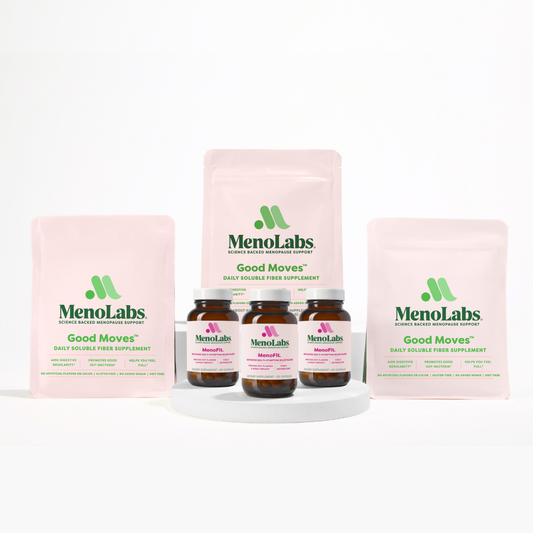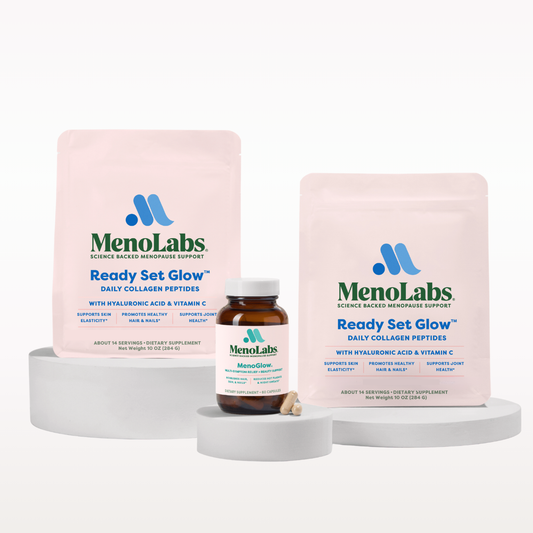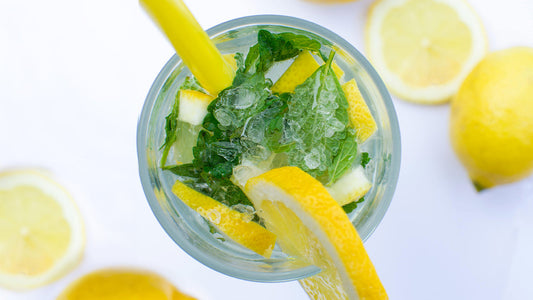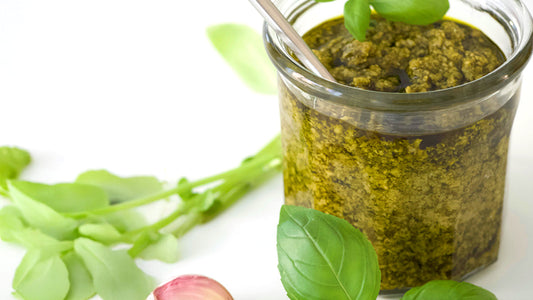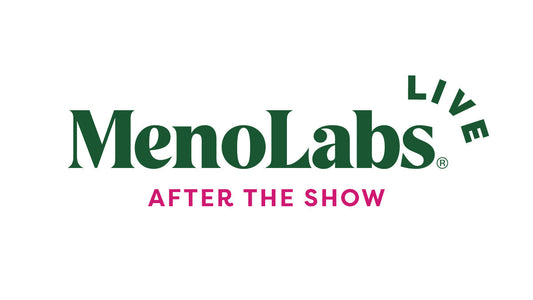Who among us isn’t drawn to a shiny object? Lustrous locks are considered a sign of youth, health, and vitality. But during perimenopause and after, many of us find ourselves losing some of that covetable sheen. Fortunately, there are some simple techniques we can use to restore our glow. But first, it’s important to understand why our hair’s light may have dimmed.
What Causes Hair Dullness in Menopause?
Dull, limp locks can be the result of a hormonal imbalance that occurs when our estrogen levels plummet during perimenopause, leaving us with a larger proportion of testosterone in our systems. When testosterone becomes dominant, it can convert to dihydrotestosterone, or DHT, in the scalp, says Sanjay Batra, MD, a regenerative medicine, hair loss, and platelet-rich plasma expert and fellow of the American College of Cardiology. DHT is an androgen — a hormone that stimulates the development of male characteristics — which is why we may begin to experience hair loss similar to men’s around this time in life. DHT is also a foe of our hair follicles, miniaturizing them so that they not only grow fewer strands — the strands that go grow are thinner and weaker.
However, hormones are not the only culprits. As we age, our scalps produce less of a sheen-boosting oil called sebum, which makes our hair drier and duller. Plus, coloring your hair, or simply heat styling, can dull shine.
Why We Need to Feed Our Scalps
“You cannot have healthy hair without a healthy scalp,” Batra says. Consider your scalp the soil out of which hair grows. When the scalp is well-tended, we sprout better-quality hair — and possibly even more of it. “I study scalps in a lab,” Batra says. “Often, mature scalps are very red and show signs of inflammation.” Inflammation can wreak havoc on on our scalps the same way it can any type of skin, constricting the follicles and blocking the growth of new hair.
How to Increase Hair’s Shine and Health
Batra believes that no matter our age, a healthy, shiny head of hair is best achieved through a holistic approach that includes a well-balanced diet. Fruits, vegetables, lean proteins, whole grains, and healthy fats help to ensure that our body functions efficiently — and that extends to the scalp and hair follicles. Also, if your tresses are looking dreary, “see your physician or gynecologist and have bloodwork done to ensure you’re not deficient in certain vitamins and minerals that can affect hair health and shine, such as B12, B3 (niacin), B5, zinc, and vitamin A. They’re all essential for the scalp and hair, as are vitamin D and magnesium.”
Anything we can do to mitigate dryness, from the inside out and outside in, also helps our hair retain moisture and shine. To that end, consider ditching heat tools (or at least using them less frequently and in conjunction with a heat protectant spray), as well as keeping hair covered while out in the sun, drinking plenty of water, and choosing gentle, sulfate-free shampoos and conditioners, which won’t strip hair of essential oils.
Batra also recommends using a clarifying shampoo or even a scalp scrub to gently lift debris and product residue from the scalp.
Keep Blood Flow Up & Inflammation Down
“If there is one universal truth in medicine, it’s that virtually every physical ailment is either due to inflammation or poor blood flow,” Batra says. To that end, consider asking your doctor to measure your CRP (C-reactive protein) level, as it’s an indicator of inflammation and stress in your body (and considering how many of us are trying to balance working, caring for kids and aging parents, experiencing some stress seems...likely).
“Scalp massage is also a good idea,” he says, as it increases nutrient-rich blood flow to the area. Plus, it feels really nice. And we all deserve that.
Didi Gluck is a New York City-based writer and editor who has covered beauty, health and fashion for more than 25 years. She has been the beauty and health director of Marie Claire, Shape, Real Simple, Redbook and MORE, and contributed to InStyle, Allure, Harper’s Bazaar, Elle, Travel & Leisure, Town and Country, Better Homes and Gardens, Popsugar and Southern Living.
Related Products
Blend Besties Bundle
Fresh Start Bundle
4.7 / 5.0
(551) 551 total reviews


